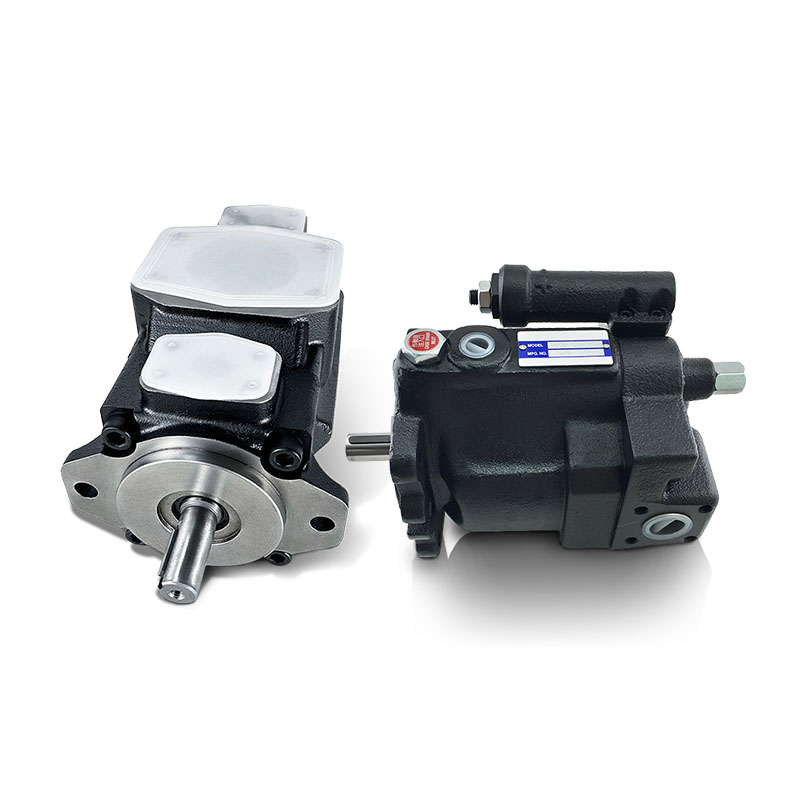The difference between vane pump and piston pump
Vane pump and piston pump concepts:
Vane pumps and piston pumps are two commonly used types of positive displacement pumps in various industries. While both pumps are designed to transfer fluids, they have distinct differences in terms of construction, working principles, and applications. In this article, we will explore the key differences between vane pumps and piston pumps.

Construction:
Vane Pump: A vane pump consists of a rotor with multiple vanes that are positioned within a cylindrical housing. The vanes are free to slide in and out of the rotor slots and are held against the housing wall by centrifugal force or springs. The rotor is driven by an external power source, such as an electric motor or an engine.
Piston Pump: A piston pump comprises a cylinder, a piston, and inlet and outlet valves. The piston is driven by a rotating crankshaft or an eccentric mechanism, which causes reciprocating motion within the cylinder. The piston is sealed against the cylinder walls using piston rings or seals.
Working Principle:
Vane Pump: In a vane pump, the rotation of the rotor causes the vanes to slide in and out of the rotor slots. As the vanes move, they create expanding and contracting chambers within the pump housing. The expanding chamber draws fluid into the pump through the inlet, while the contracting chamber pushes fluid out through the outlet.
Piston Pump: In a piston pump, the reciprocating motion of the piston within the cylinder creates alternating pressure zones. During the suction stroke, the piston moves away from the inlet valve, creating a low-pressure zone that draws fluid into the cylinder. During the discharge stroke, the piston moves towards the outlet valve, compressing the fluid and forcing it out through the outlet.
Application:
Vane pump: The structure of the vane pump is more complex than the gear pump, but its working pressure is higher, the flow pulsation is small, the work is stable, the noise is small, and the life is long. such as engineering machinery, agricultural machinery, plastic machinery, the aviation industry, and the shipbuilding industry are waiting. They are also suitable for handling low to medium-viscosity fluids.
Piston pump: Due to its high pressure, compact structure, high efficiency, and convenient flow adjustment, the piston pump is used in systems that require high pressure, large flow, and high power, and in situations where the flow needs to be adjusted, such as heavy machinery, construction equipment, and industrial processes. in the hydraulic system. They are capable of handling fluids of various viscosities, including viscous and abrasive fluids.
Conclusion:
Vane pumps and piston pumps are two different types of positive displacement pumps with different designs, working principles, and applications. Vane pumps are suitable for medium flow and medium pressure applications, while piston pumps are preferred for high pressure and high flow applications. Your working oil pump can be customized according to your machine's needs.
